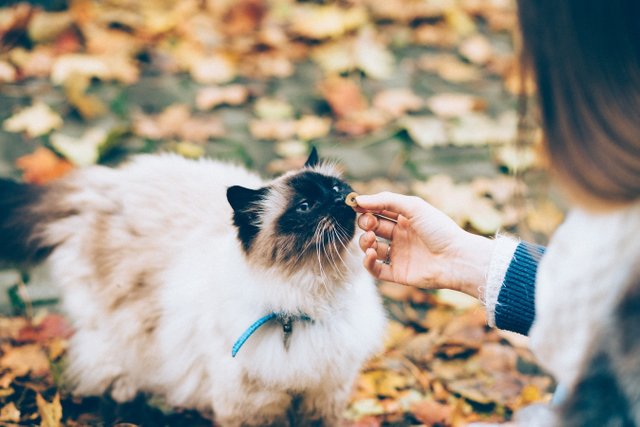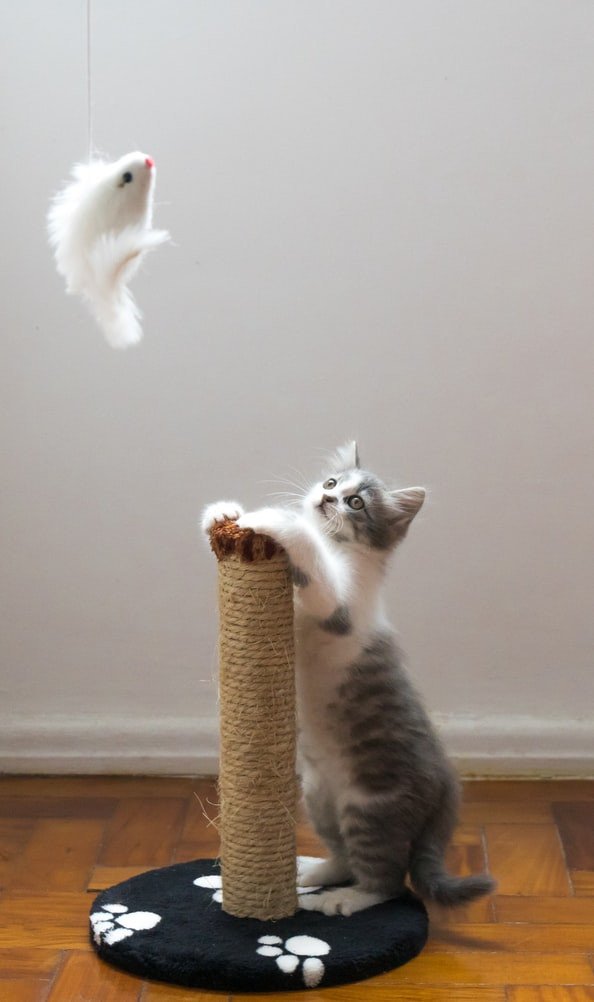Teaching Your Cat – Basic Training for Cats
Developing habits with your pet is a journey that is constant and filled with structured effort. Rome wasn’t built in a day and cat habits were certainly not built over the course of a few days. Well-trained cats are examples of owner interaction and training regimes that have used various methods to teach their kitties useful skills. Cats are not born with the ability to do most of the cool things related to obedience of uncommon habit, but with some basic training, most cats can pick up new skills for an easier way of life.
When your kitten has matured passed its days of understanding the world as it grows, it’s a good time to introduce training concepts. Cats are heavily motivated learners when food is involved, leveraging this is a great way to begin training and subconsciously introduce new skills. Figuring out how to train your cat is not an easy task but with food based experimentation, success can be realized.

Cat Training Basics
Motivators
Figuring out the best motivators for your pet will take time to realize. You’ll have to try a combination of food, toys and interactions to maintain your cat’s attention and guide them to participate in training.
Rewards
Cats rarely do anything for free, we can’t bribe our cats but we can certainly reward them for trying their best when learning. Rewarding is a form of communication and helps to strengthen the connection between correct actions and reward. Cats will eventually develop a conscious connection between certain actions and the desired reward. Rewarding your cat can involve feeding tasty treats, a massage, words of encouragement and a combination of everything they love. Motivating your cat to attempt increasingly difficult skills may require further rewards that scale, it’s best to consider this out of the gate. If your cat begins to show complacency, they have been over rewarded and feel less obligated to persist with the training activities. Rewards are given for effort, they are not to be expected in all cases.

Reprimand
We never reprimand our cats in physical ways. This is highly dangerous to the relationship and wellbeing of your beloved cat. Always avoid physical forms of reprimand and keep in mind that feedback to your cat is a result of behavior that should not be rewarded, never try to punish a cat. If your cat starts to display undesirable habits, an audible call to say stop or no is all that’s needed. Do not reward them, simply walk away for a while and ignore them. They will eventually realize certain actions are not approved of and adapt their ways.
Never face a cat with intimidation or conflict, this will only heighten aggression and damage the relationship between you and your cat. Show your cat all the love you can and treat them with care even when they make mistakes, leaving the room is the most effective approach in our experience.
Correcting Strange Eating Habits
Cats can sometimes pursue abnormal food sources that aren’t edible at all. This is a dangerous habit. If your cat gnaws and tries to ingest various fabrics or trawls through trash, it’s best to intervene as soon as possible. Avoid using active deterrents such as spraying water, instead, apply a stance of prevention and distraction. If your cat is looking for things to eat or lick, provide snacks and activities to engage in. Restricting access and letting your cat live in a safe environment is important.

The Scratching Problem
Cats have a need to use their claws on a daily basis. Cats are natural athletes that run, jump, bite and scratch. In the domestic home this is sometimes seen as destructive and undesirable. We cannot ask a cat to compromise its natural behaviors, an approach of redirection is required instead. Providing substitute apparatus is important, especially for a cat scratching problem. Your cat will have a need to grind their claws away on a rough surface. If your cat has taken to scratching at furniture or other parts surfaces in the house, it’s time to provide them with a Cat Scratching Post that will help to maintain healthy nails.
Cat Scratching Posts can be purchased readymade, or you can even make your own using old cardboard boxes. Placing a couple around the house and showing them the sounds and actions of scratching at the corrugated surface will help to redirect your cat’s scratching desires. They will use this to hook their claws into and get a great stretch too. We love watching our cats get a healthy nail workout and will regularly their nails them to avoid ingrown nails and injury.
Visit - https://aipaws.com

 Steem
Steem  Twitter
Twitter  YouTube
YouTube
 Instagram
Instagram Pinterest
Pinterest Facebook
Facebook
Great job :)
Downvoting a post can decrease pending rewards and make it less visible. Common reasons:
Submit
Thanks dear 🧡
Downvoting a post can decrease pending rewards and make it less visible. Common reasons:
Submit